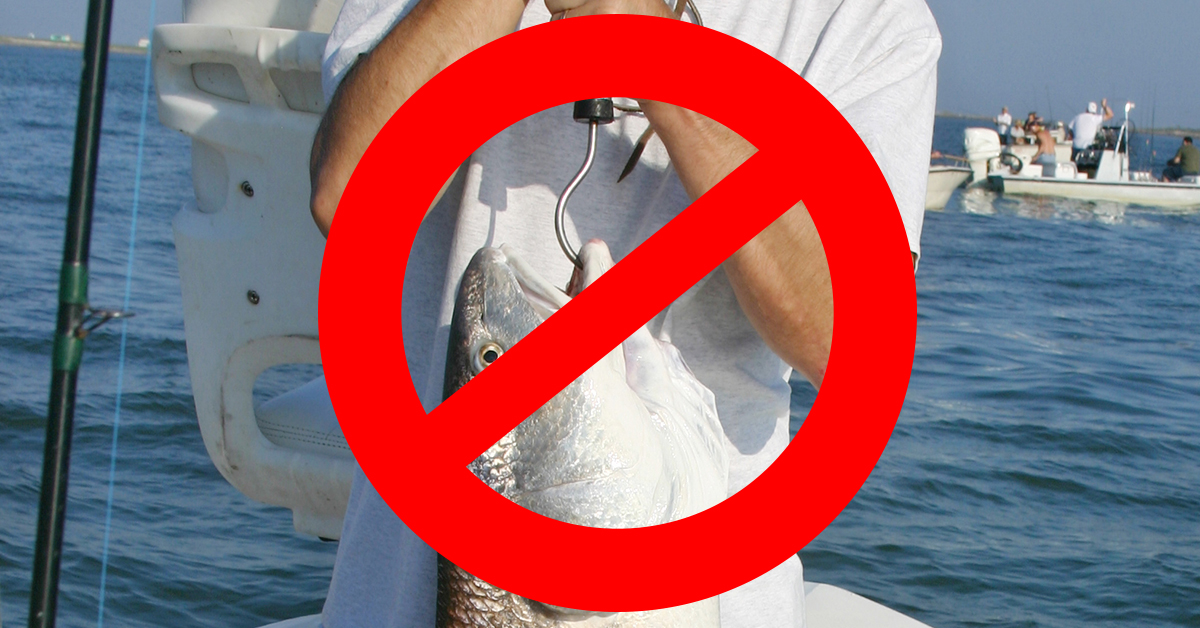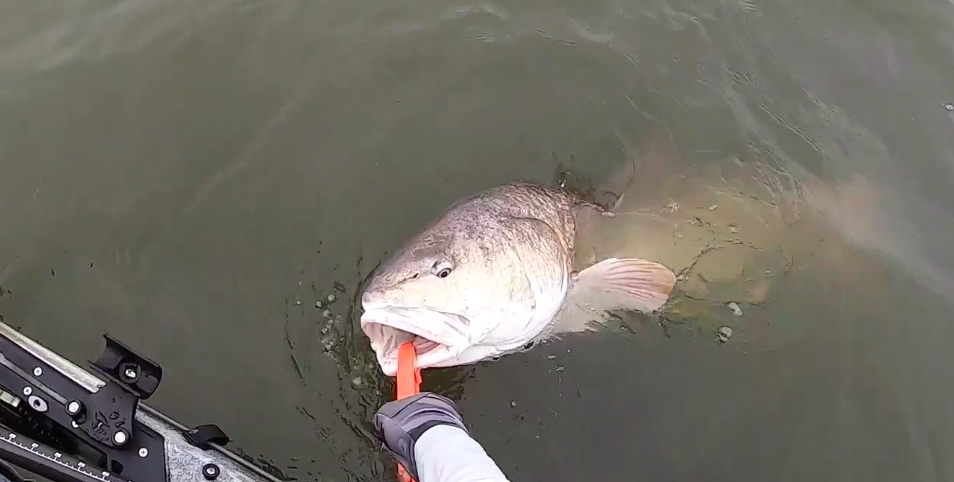How To Properly Land, Handle, Revive & Release Fish
- By: Tony Acevedo
- on
- Found In: Conservation, Fishing Tips, Inshore Fishing

Do you want to catch fish for the rest of your life?
Do you want future generations to have the same fishing opportunities you do?
If you do, then this might be the most important article you’ll read all year…
If we want there to be fish in the future, then we need to take care of the fish we have today.
Of course, we can’t keep all the fish that we catch, so safely releasing the fish we don’t keep is incredibly important.
This video will show you the proper way to land, handle, revive and release fish so that they can live to reproduce and fight and another day.
And this is especially important for larger fish because they fight longer, and the longer they fight, the longer they’ll need to be revived.
There’s a lot of useful tips in here, and most people actually don’t handle fish correctly, so be sure to watch the entire video.
Enjoy!
P.S. There’s some pretty gnarly bull redfish action in here that you’re not going to want to miss.
How To Properly Land & Release Fish [VIDEO]

Note: That monster redfish was caught using a Slam Shady paddletail. Get yours here.
When we catch fish and bring them aboard our boat or kayak, we’re literally taking the fish out of their element.
There are several things that could go wrong when we do this, as well as several things we need to keep in mind.
Keep reading to see what you should never do, and what you should always do when handling and releasing fish.
What To Never Do When Handling Fish

Fish are usually laying horizontal in the water, with the water supporting their bodies.
What you should never do is hang a fish vertically (either tail up, or head up).
When you do this, their internal organs are being pulled down by gravity, which is not natural and could cause damage.
And if you hang a fish up by their tail, that’s putting pressure on the tails’ bones, joints and muscles that’s not normally there.
If you damage their tail, it could be lethal for the fish.
If you hang a fish vertically by their jaw or gill plate, you could hurt their ability to eat or breathe, which is also possibly lethal for the fish.
What To Always Do When Handling Fish

When you’re handling a fish, make sure to always do these four things:
- Support the fish’s body by placing a hand under their body.
- Have a way to secure the fish so if it wiggles you don’t drop it on the deck of the boat.
- Plastic fish grips are great because they don’t put a hole in the fish’s mouth. You can get them here.
- When reviving them, you need water to flow through a fish’s gills. Here’s how you can do that:
- Move them in a figure eight to get water flowing through their gills
- Position the fish into the current so water is flowing through their gills
- Motor or paddle your boat or kayak and keep the fish in the water next to you
- When releasing them, you can move the fish’s tail to help get rid of the lactic acid buildup and entice them to start swimming.
Also remember this: warmer water has little dissolved oxygen so it will take more time to revive a tired fish in the summer.
Be patient and give them time.
Conclusion

Whether a fish is too big, out of season, or you’re just having some catch and release fun, it’s important to know how to properly land, handle, revive and release a fish.
Keep these things in mind:
- Never hold a fish vertically
- Support the fish’s body when they’re out of the water
- Secure the fish so they don’t flop around and hurt themselves (I use these fish grips)
- Revive them by having water flow through their gills
- Move the fish’s tail to get rid of the lactic acid buildup and entice them to start swimming
Have any more questions about proper catch and release tactics?
Let us know in the comments below.
Most people don’t properly handle fish, so please share this around so that we can have higher survival rates and more fish for future generations.
P.S. Want to catch more fish, get the best local spots, and get discounts on fishing gear? Join us in the Insider Club!
Do You Want To Quickly Find New Fishing Spots In Your Area?
Then you’ve got to see this private fishing club!
Here’s what you’ll receive today:
- Weekly fishing reports and TRENDS revealing where the inshore fish are feeding all year long
- Weekly “spot dissection” videos that walk you through all the best spots in certain areas
- Exclusive fishing tips from the PROS you can’t find anywhere else
- Everything you need to start catching fish more consistently (regardless if you fish out of a boat, kayak, or land).
Click here to join today.
Related articles:
- How To Retrieve A Weedless Spoon To Get More Strikes [Case Study]
- How To Catch More Redfish, Snook, & Grouper With Just ONE Lure
- How To Rig Shrimp On A Jig-Head Like A PRO (VIDEO)
Disclaimer: When you buy through links on our site, we sometimes earn affiliate commission from places like Amazon, Bass Pro, Tackle Warehouse, etc. It’s one more way we can help you quickly find the best deals on the web while making sure we’re still around to serve you for years to come (and you do want us to be around to help you catch fish for many more years, right)?
Related categories:
STOP WASTING TIME ON THE WATER!
Do what the “SMART ANGLERS” are doing and join the Insider Club.
Here’s what you’ll receive today when you join:
- Weekly fishing reports and TRENDS revealing exactly where you should fish every trip
- Weekly “spot dissection” videos that walk you through all the best spots in your area
- Exclusive fishing tips from the PROS you can’t find anywhere else
- Everything you need to start catching fish more consistently (regardless if you fish out of a boat, kayak, or land).










Where is the best spot to get the air out of the bladder on black drum when you bring them up from from a deep depth
Hey Terry!
Here is a video showing how to properly vent fish. We’re using red snapper as an example but it is the same for other fish as well:
https://www.saltstrong.com/articles/how-to-vent-fish/
So, I want to get this right but the part I’m struggling with is getting the hook out. I mostly kayak fish. Are you suggesting that I get the fish to the side of the kayak, set the fish grips and remove the hook all while it is in the water? Then if I wanted a quick photo, lift it horizontally out of the water and use the voice controls on my phone? We shouldn’t even hold it vertically out of the water for a moment to get the hook out? What about people in boats? How should they get them in the boat to get the hook out? I appreciate the detail after such a thorough article.
Hey Vincent!
I get the fish on board and remove the hook after. It can be tough to keep the fish in the water and remove the hook from a kayak unless you actually get in the water. When lifting these bigger fish you can either get them with the fish grips and reach under their belly to get them in, or often times I will grab them by the tail to get control of them, and then lift them in while supporting the belly. You just want to avoid hanging the fish by its head (whether by the jaw or gill plate). Heres another video on the best ways to land them on a boat and some more handling tips:
https://www.saltstrong.com/articles/how-to-handle-release-big-fish/
Thanks Tony! Happy Holidays.
Tony, I used the reviving method you show in this video for years. However, I started just releasing the fish ASAP with good success. I wonder if continuing to keep the fish captive puts too much stress on the fish building up lactic acid. Are you aware of scientific studies which confirm “reviving” works? Gills of course do not function like lungs. If we are out of oxygen we just take a gulp of air. Water pushed over the gills eventually gets oxygen to the fish but not immediately…how long does it take? I would really appreciate reading a study confirming the best method of reviving our fish. Thanks and tight lines!
Small fish tend to kick off pretty quickly and i release them quickly as well. The larger fish that fight harder and expend more energy need help with revival. Unfortunately, I don’t have any scientific evidence for it, but I have first hand experience with watching fish just go belly-up if released too soon. The longest I have taken to revive a large redfish was about 15 minutes. I thought she was good to go after a couple minutes but she swam about 3 feet and went belly up. Continued for another 10 minutes and she finally kicked very aggressively and swam off. I watched for a few minutes to make sure it didn’t go belly up again. Another interesting experience I had was when I caught the same redfish twice within a year. It was a bull red in the 40″ range and I took about 5 minutes to revive it the 1st time. Still alive and very healthy when caught the 2nd time! I knew it was the same fish due to the location and mainly the spot on its tail. It was unique and I had taken a picture of it both times. So I have my own personal experiences that confirm that reviving works. If a fish doesn’t swim away strong, you’ll know quickly as they will go belly-up. Without assistance in that condition they are pretty much helpless.
oh man after listening to this video i realize how much im doing wrong when handling fish. i use the plastic fish grips for the fact that they don’t jack up the fishes mouth but i always take photos with one hand and hold the fish up with the grip, not realizing how bad that actually is. this video was very informative and so important. thanks tony!
Glad to help, Robert! No problem!
Half the battle of releasing a fish in good condition is fighting it on a proper rod reel combination, and finishing it off as quickly as possible. I also try to release my catches just above the water’s surface, using a dehooker without even touching the fish. I think it may give my inshore catches the best chance at surviving.
Absolutely! Sometimes we hook into more than we’re prepared for though. When that happens it’s really key to properly fight the fish to wear them down quicker. I always turn them as much as possible while fighting. You never want to keep your rod tip straight up and pump, it really doesn’t do anything. Whatever direction they try to run, pull them the opposite way.
Great video! I thought I was doing a pretty good job handling my catches. Boy, was I wrong. When I am fishing with my kids, I use live bait and quite often they let the fish take the bait too long and get a deep hook set. If this happens, is it better to try to get the hook out and cause damage that way or just cut the line and leave the hook in the fishes mouth?
Thanks Lloyd! I prefer to cut the line as close as possible to the hook and leave it. They will rust out over time or work themselves out. Sometimes you may be able to cut the line and pull the hook from the pointy end. Barbless hooks are also another option that are much easier to remove.
Also, be sure to use circle hooks with live bait. Less of a chance of them getting hooked deep. Be sure they aren’t offset hooks though because they will hook the fish anywhere, even though they may be circle hooks. The offset hooks have a hook point that is not in-line with the shank of the hook. True circle hooks have a point that are in-line with the shank of the hook and the point is 90 degrees to the shank.
Wish I knew this before my profile picture !!! Won’t happen again !!!
Haha, it happens!
Genuinely enjoyed your video on properly handling caught fish. On returning a fish into the water after the catch, what is the minimum time for “fish out of the water”; allowing for photographing, etc.???
Best,
Mike McNeely
Thank you for the great feedback Mike! I would say for as long as you can hold your breath, that’s about as long as you would want to keep them out of the water. Always have pliers within reach to remove hooks if needed and a camera ready to go. I keep a Go Pro mounted on the kayak and record video. I can then go home and take a screenshot from the video instead of fumbling with timers and all of that.
Really great tips, Tony……..I still can’t over the size of that red. If they got that big over here, I’d need to spend some time in the weight room to make sure I could lift it!
Thanks Gary! Me too! Whenever I look back at the videos and pictures it never gets old. Biggest on artificial for sure!
Hey Tony, what if you don’t have a peddle kayak? What would be the best way to release the fish? This video helped out a great deal for me.
Hey Bryan! Before I had a pedal kayak, I would still use the fish grips but tie a rope to them and slowly paddle with it attached to the kayak. You can also face the fish into the current while moving their tail side to side. Or get in the water and walk the fish in circles to get water moving through their gills. A lot of people make the mistake of pushing the fish back and forth, which doesn’t really get the water flowing through.